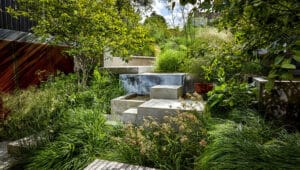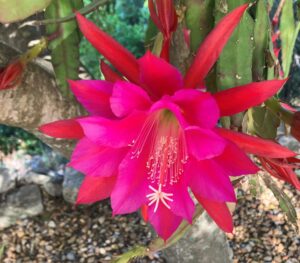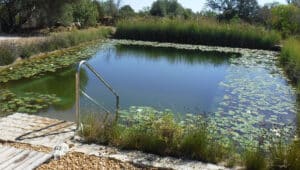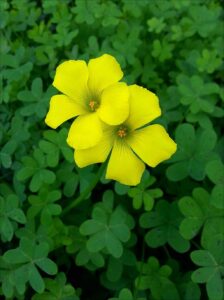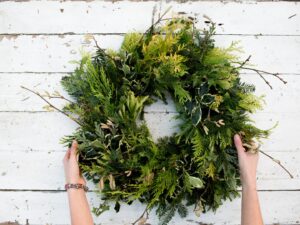By: STUART MERELIE
Stuart Merelie, landscaper, ecological researcher and permaculture fanatic, shares his passion for correct and sustainable landscaping in the Algarve and is The Resident’s permanent garden and landscaping correspondent. This is the eighth part in a series of 24, exploring permaculture and its importance and uses in today’s world.
MY OWN efforts to living as sustainably as possible are often thwarted by my location, bad soil, no water and no trees.
Whilst I try hard to overcome them by importing resources (often free as a by-product of landscaping), it normally involves my truck, my cheque book and hours of driving. Not that sustainable really.
Enter Jonathon and Jennie Evelight. After 18 months of searching, they found the right spot. On the edge of the river Mira floodplain, they purchased four hectares of woodland, complete with a good spring for water, arable terraces, lots of trees and, as Jonathon added, equally as important, good knowledgeable neighbours.
In this corner of the Alentejo, the traditional skills required to sustainably build (and rebuild the four houses on the plot) are not in a book, but largely in the head of Sr. António, his nearest neighbour and a scattering of elderly locals. Learning from and being accepted by their neighbours is one of Jonathon’s unsung joys.
“This is the last generation of sustainable knowledge and is disappearing, our last opportunity to learn the economic, careful ways that have supported this area for the last thousand years”, commented Jonathon, as passionate as ever. With António’s children moving to apartment life in the local town, this is last chance café.
Eco village
The land was formally signed for in February 2007. As an association, it is protected for the future. It cannot be sold individually into smaller plots as long as there is a member who wants to continue the eco village.
People can buy in or sell their share and move on – currently there are six owners and space for a further couple. Everyone who lives there shares in the decision making. Whilst Jonathon is the spokesman and main organiser, on my visit I witnessed a real bond between all the others. None of them are wizards, they can work most of everything out together and speak truthfully and openly, are self reliant but cooperatively minded.
The old houses in this area are incredible. Built from rammed earth (called taipa locally), all the walls can be constructed out of the local soil. It is not mixed with anything else and is simply shovelled into a space between two building planks then hammered down. When this is completed, the boards are raised and another layer is added and so on. The proof in the pudding on this was a walk around the nearby fields. I came across several ruins where the roofs had fallen in but the walls were perfect! Labour intensive, yes, but the materials are free.
Inspiration
Jonathon and Jenny restored their cottage at a total cost of 3,000 euros, with lime plaster over the original rammed earth walls, beams and poles hewn from their forest, floor tiles from their own soil and cast a local kiln. The spring was overgrown and after a good clear out gives perfectly clear drinking quality water, and runs into an oasis of a sparkling pool before irrigating the terraced vegetable gardens that hug the sides of the valley below. It reminded me of the lost gardens of Heligan in Cornwall, overgrown and now rediscovered.
They have found it a hard slog, dividing time between growing vegetables and rebuilding the house, but with the addition of Martin, Jo, Ali and another Jo, it is steadily progressing.
All power is provided by Jonathon’s solar installation, this is then fed to all the houses. Water for houses above the stream is risen by a solar run pump from a bore hole with header tank above to provide water to all the dwellings. Sr Romão, a big beauty of a donkey, provides the company transport. Net monthly utility bills—zero. This is the big difference between sustainability and living ecologically.
I strive to copy or follow Jonathon’s lead, his pure simple ideas, his friends with open minds and big hearts.
We left the Rainbow community after staying there eight hours. We had arrived strangers, we left good friends, full of ideas and inspiration. One thing is for sure, you get the life you believe in. I’m jealous.
Rainbow is running a Friends and Family Week from April 11 to 20, 2008. This is a time for doing practical and ecological tasks, learning basic skills, making friends and enjoying a natural and beautiful environment. You will join the residents to arrange activities together, cook food together, entertain and sing songs and relax in a good way, creating friendship and community. The cost is five euros a day per person. Contact Jonathon or Jenny on 961 252 349 or email solar@rainbowtradingpost.com. Their website is www.rainbowcommunities.org


